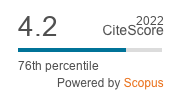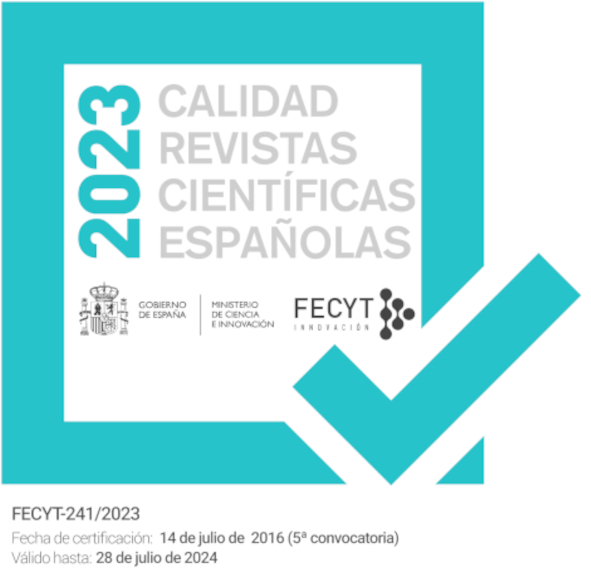Identification of land use conflicts for urban growth planning: Ciudad Cuauhtémoc, Chihuahua (Mexico)
DOI:
https://doi.org/10.18172/cig.3425Keywords:
land suitability, urban planning, spatial analysis, land use conflict, GISAbstract
This research incorporates new forms of analysis for urban planning and development in Ciudad Cuauhtémoc, Chihuahua (Mexico), providing elements of reference by identifying areas with potentiality and limitations for urban land use, as well as for agricultural and conservation activities. The general objective was to identify the main conflicts between land uses and coverages to determine the areas of greatest territorial suitability for the city's growth. For this purpose, the Land Use Conflict Identification Strategy (LUCIS) model was used to understand the spatial significance of the status of land use policies, including likely urban patterns associated with agricultural and conservation trends. In the case study, a total of 149,139 inhabitants are estimated for the year 2030, which represents the need for an additional 392.42 hectares to accommodate the population growth. For that of the 16,272.21 hectares that has the population limit, 38 % were allocated to the category of agriculture, 11.95% to conservation soils and 49.67% to urban land (including the existing urban area). There is a significant portion of the area that is in conflict between the different land uses. It concludes, that the integration of a conflict resolution model for land use and land cover represents a practical solution that contributes to the improvement of processes of urban development planning.
Downloads
References
Alatorre, L.C., Díaz, R.E., Miramontes, S., Sánchez, E., Bravo, L.C. 2014. Spatial and temporal evolution of Cuauhtémoc aquifer static level during the years 1973, 1991 and 2000: A geographical approach. Journal Geographic Information Systems 6, 572-584. http://doi.org/10.4236/jgis.2014.65047.
Bazant, J. 2010. Expansión incontrolada y paradigmas de la planeación urbana. Espacio Abierto, 19 (3), 475-503.
Bunruamkaew, K. 2012. How to do AHP analysis in Excel. University of Tsukuba, Tsukuba, Japan.
Carr, M., Zwick, P. 2007. Smart Land-Use Analysis: the LUCIS model, Land-Use Identification Strategy. ESRI Press, 292 pp.
Cifuentes, P.A. 2009. Modelización de los factores de crecimiento urbano como aporte a la sostenibilidad. Estudio de caso: Manizales-Colombia. Revista Internacional de Sostenibilidad, Tecnología y Humanismo 4, 81-96.
CONAPO 2016. Consejo Nacional de Población.
da Cunha, J., Rodríguez, J. 2009. Crecimiento urbano y movilidad en América Latina. Revista Latinoamericana de Población 3 (4-5), 27-64.
Daga, R.A. 2009. Determinación de áreas con aptitud para la expansión urbana con fines de ordenamiento territorial aplicando el análisis espacial multicriterio: Caso cuenca baja del río Lurín. Tesis Doctoral. Universidad Nacional Mayor de San Marcos, Lima, Perú.
Davidoff, P., Reiner, T. 1962. A Choice Theory of Planning. Journal of the American Institute of Planners 28 (2), 103-115. http://doi.org/10.1080/01944366208979427.
Díaz, R.E., Bravo, L.C., Alatorre, L.C., Sánchez, E. 2014. Análisis geoespacial de la interacción entre el uso de suelo y de agua en el área peri-urbana de Cuauhtémoc, Chihuahua. Un estudio socioambiental en el norte de México. Investigaciones Geográficas 83, 116-130. http://doi.org/10.14350/rig.32694.
Garza, G. 2010. La transformación urbana de México, 1970-2020. En: Garza, G., Schteingart, M. (Coords) Desarrollo Urbano y Regional, El Colegio de México, México D.F., pp. 31-86.
INEGI 2015. Censo de Población y Vivienda.
Loya, J.O., Torres, M.E., Bravo, L.C., Alatorre, L.C. 2015. Análisis del cambio de cobertura y uso de suelo durante el periodo 1995-2011, EMC y autómatas celulares para la predicción del crecimiento urbano, el caso de Ciudad Cuauhtémoc, Chihuahua. En: L. Alatorre, M. Torres, H. Rojas, L. Bravo, L.Wiebe, F. Sandoval, E. López (Eds.), Geoinformática aplicada a procesos geoambientales en el contexto local y regional: teledetección y sistemas de información geográfica. UACJ, Ciudad Juárez, Chihuahua, México, pp.163-194.
McHarg, I. 1969. Design with nature. New York: Doubleday/Natural History Press.
Molero, E., Grindlay, A., Asensio, J.J. 2007. Escenarios de aptitud territorial y modelización cartográfica del crecimiento urbano mediante técnicas de evaluación multicriterio. Geofocus 7, 120-147.
Peña, S. 2016. Teoría de la planeación: el paradigma clásico y los paradigmas emergentes. Planeación urbana y regional. Ciudad Juárez, México, COLEF-UACJ, pp. 35-65.
Rionda, J. 2008. Distribución de la población y crecimiento urbano en México. Análisis Económico, 52 (23), 201-218.
SDUE Gob. Municipal de Cuauhtémoc 2009. Plan de Desarrollo Urbano de Centro de Población. Secretaría de Desarrollo Urbano y Ecología, Cd. Cuauhtémoc, Chihuahua, México
Silberstein, J., Maser, C. 2013. Land-Use Planning for Sustainable Development. CRC Press, 296 pp.
Wacquant, L. 2001. Parias urbanos. Marginalidad en la ciudad a comienzos del milenio. Ed. Manantial, Buenos Aires, 204 pp.
Downloads
Published
How to Cite
Issue
Section
License
The authors retain copyright of articles and authorize Cuadernos de Investigación Geográfica / Geographical Research Letters the first publication. They are free to share and redistribute the article without obtaining permission from the publisher as long as they give appropriate credit to the editor and the journal.
Self-archiving is allowed too. In fact, it is recommendable to deposit a PDF version of the paper in academic and/or institutional repositories.
It is recommended to include the DOI number.
This journal is licensed under a Creative Commons Attribution 4.0 International License











